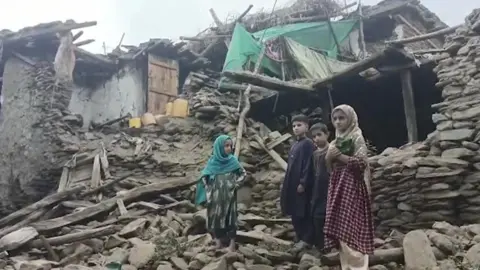A 6.0 magnitude earthquake has struck Afghanistan's mountainous eastern region, killing hundreds as authorities scramble to assess the damage.
The quake hit at 23:47 local time on Sunday, with its epicenter located 27km from Jalalabad, Afghanistan's fifth-largest city, at a shallow depth of 8km. Its tremors were felt 140km away in the capital, Kabul, and across into neighboring Pakistan.
Initial reports highlight significant casualties and extensive damage across Nangarhar and Kunar provinces. Rescuers face challenges due to rocky terrain and blocked roads, compounded by subsequent aftershocks. Preliminary figures suggest more than 600 people may have died, according to the Taliban's interior ministry, although officials caution against jumping to conclusions given the chaos.
Relief efforts are underway, but many areas remain inaccessible due to landslides, forcing authorities to deploy helicopters to evacuate individuals trapped under rubble. Aid from international organizations has already been requested as eyewitness accounts indicate numerous homes have collapsed.
This catastrophic event follows severe flooding that recently struck the region, causing additional destruction and casualties. As recovery operations face logistical struggles, the Taliban government grapples with the unusual challenge of coordinating aid amidst existing political tensions.
Given Afghanistan's recent history of earthquakes, many realize the impact of such natural disasters is exacerbated by the country’s fragile infrastructure, with most buildings made from non-quake-resistant materials like timber and mud bricks.
This unsettling situation raises questions about Afghanistan's capability to handle crises effectively, especially as over 23 million Afghans are already in need of humanitarian assistance following the Taliban's return to power.





















